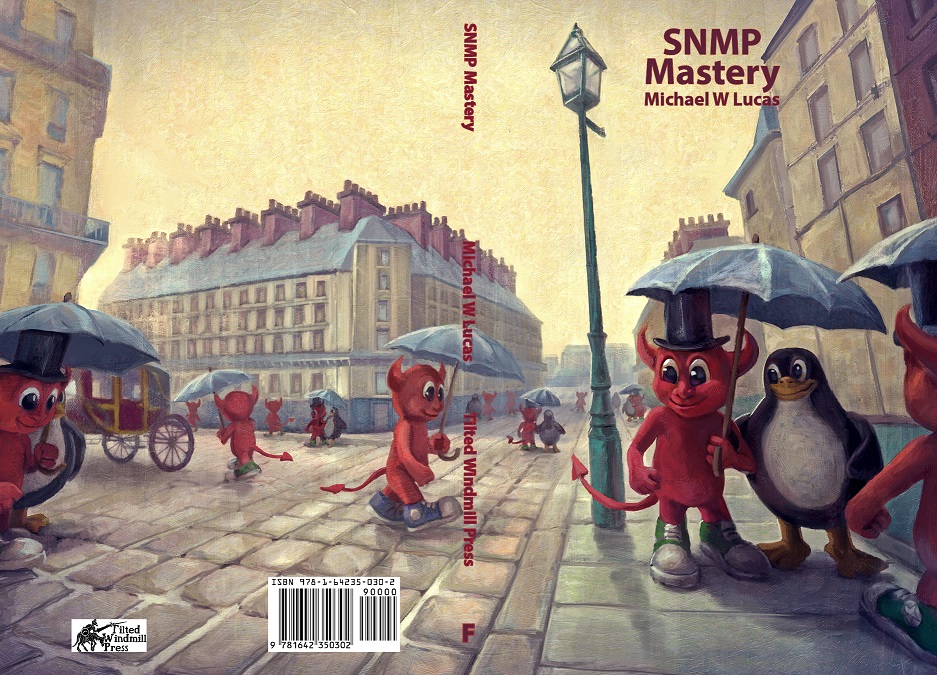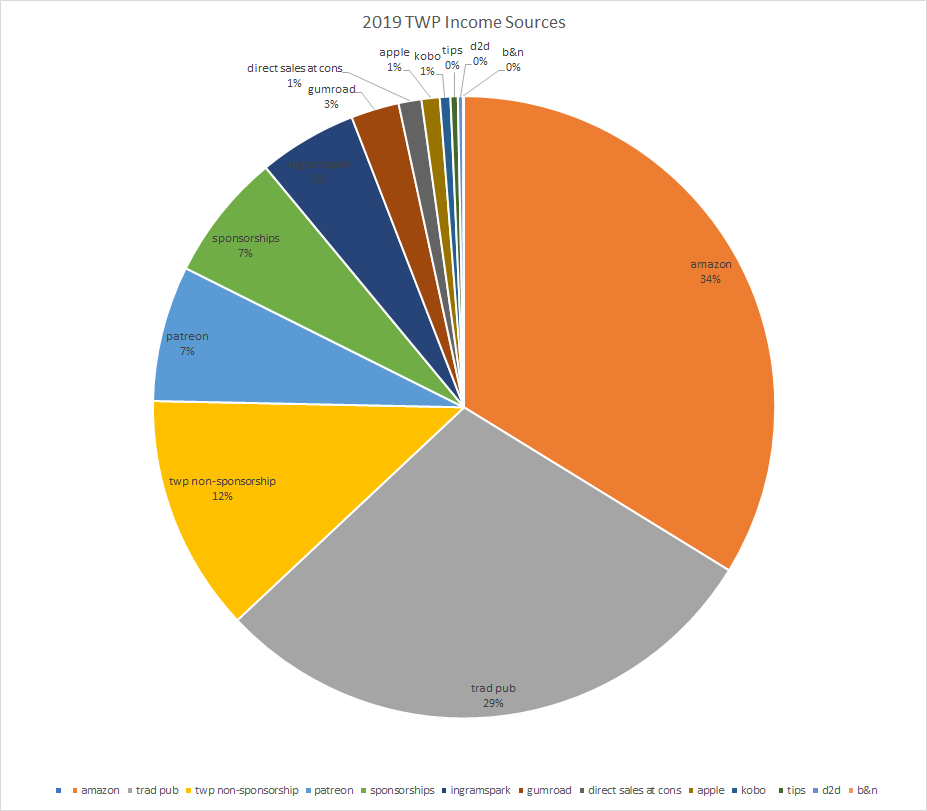I sent the official release announcement today: SNMP Mastery is everywhere. You can get it, no matter where in the world you are or what vendor you prefer. Assuming they’re open, that is.
The world is in chaos. This is the worst possible time to do a book release. Like every other industry in the world, my income has plunged eighty percent. Fortunately, I’ve prepared for just such a contingency. We’ll be okay for a while yet.
But the world has no space for April Fool’s Day.
I’ve long believed that a prank must have meat behind it. A funny blog post is not a prank. Ed Mastery was a prank, particularly with the Manly McManface edition. People saw it, snorted, and then discovered it was real and laughed. And certain people were horribly, horribly offended. Exactly as intended.
SNMP is often compared to black magic. Therefore, I prepared a grimoire version of SNMP Mastery, to be released on April Fool’s Day.
It is the finest physical artifact I have ever produced. The dust jacket is glorious, and there’s still more glorious art beneath it. The interior is stamped with labels from the Miskatonic University Library of Computer Science. No other technology topic is so utterly fitting to be presented as a eldritch tome of forbidden black magic. I have labored over the Networknomicon for six months.
The world is flat-out not in a place for this prank.
The Networknomicon was a sunk cost when everything went to hell. It was already at the printer. Copies were shipped to all the print-level sponsors and Patronizers. The ball was rolling downhill, and people were looking at the sponsor copies and saying that they needed it.
I’m still proud of creating the Networknomicon.
I would much prefer the world was in a place to laugh with me. But it’s not.
I’ve elected to just let it quietly seep out, not using it as an April Fool’s prank. I’m not going to demand to know who did this, indignantly insist the perpetrators fess up, threaten lawsuits for soiling my good name. I will not demand to know what happened to the “My Little Pony”-themed editions I supposedly shipped to print sponsors and Patronizers. And what sort of idiot prices a book at $66.66? (Yes, it’s expensive. This art was not cheap.)
My excitement has been building for six months. I have been desperate for 1 April to arrive so I could enjoy the world’s perplexity and cackle for a solid week.
And it’s going to fizzle. This disappointing decision makes me sad.
But I can’t joke about necromancy, black magic, and a book bound in cyborg hide during a pandemic, while millions are losing their jobs and companies that charge thousands of dollars for desperately needed ventilator fittings that can be cheaply 3D printed on site are threatening to sue over saving people’s lives.
On the whole, I’m ridiculously lucky. What everyone else calls “social distancing” is my normal life. I bought a Costco crate of toilet paper a week before the panic hit Detroit. I have enough medication to get through a few months, and enough steel cut oatmeal for months.
I will get over the sad. And we will get through this. Most of us, at least.


